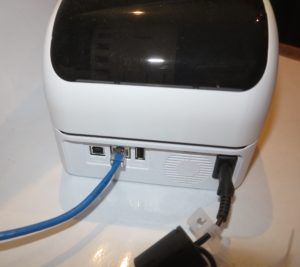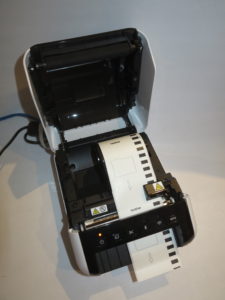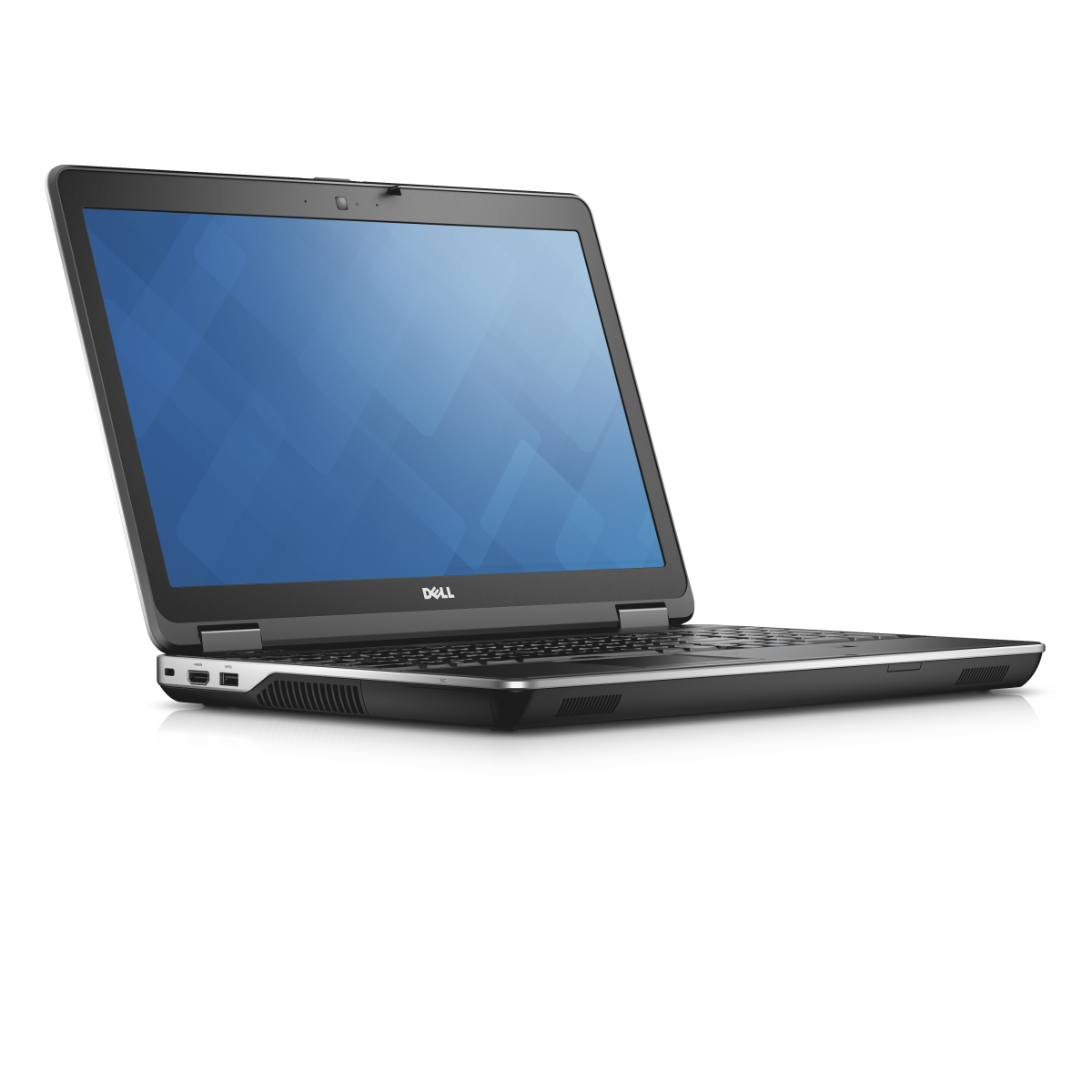I am reviewing the Brother QL-1110NWB wide-format network label printer which is the premium model for Brother’s QL-1100 series of wide-format label printers. It is seen as something that can work with applications where barcodes, graphics or extra details like weights and use-by dates are to be placed on a label like with packaging or commercial-kitchen food management.
There are two machines that are part of the Brother QL-1110 Series label printer lineup – the QL-1110 and the QL-1110NWB. The QL-1110 can only connect to the host computing device via USB and also supports USB-host connectivity for HID-class USB barcode readers. Android users can use USB OTG or USB Type-C adaptor cables to connect their devices to this printer and print using the Brother apps.
The QL-1110NWB supports the abovementioned USB connections but also supports network connectivity via Wi-Fi or Ethernet along with support for wireless connectivity via Bluetooth or direct (own access point) Wi-Fi connectivity,
Both of these machines run from AC power using an integrated power supply where you are not dealing with a “wall-wart” or “power brick” to supply power to them. Rather you are simply using the same kind of AC cord that you would use to power a portable radio and that leads towards a cable you can easily replace if the original one goes missing.
Connection to your computer or network

Brother QL-1110NWB network label printer connections – USB for direct to host connection, USB for barcode readers and Ethernet
The Brother QL-1110NWB can connect to your network via Ethernet or Wi-Fi wireless as well as being able to print from mobile devices using either Bluetooth or Wi-Fi Direct connections. But if you are setting up this machine for Wi-Fi-based network connectivity, you have to connect it to a regular computer running Windows via USB and run the supplied Printer Setting Tool to configure it. This doesn’t apply if you use WPS “push-to-connect” Wi-Fi setup or Ethernet connectivity on a small network.
I had found that the Printer Setting Tool was not surefire in its approach for Wi-Fi network setup and couldn’t even get it connected to my home network. But I could simply plug it in to the Ethernet connection which can be of use for setups where your premises is wired for Ethernet or you use a HomePlug powerline setup.
There is support for Web-based configuration but this only applies if you have it connected to your network.
It also supports Apple’s AirPrint driver-free printing standard so it can work with iOS and MacOS hosts without needing driver software.
Personally, I had found that the Brother QL-1110NWB label printer yielded a surefire connection when I used it with an Ethernet connection or a USB direct-to-host connection.
The label printers also have an integrated guillotine which makes it simpler and more elegant to manage the labels. This works under programmatic control or you can cut the labels manually through a push-button on the machine’s control panel.
Loading label stock in the label printer
The Brother QL-1110 Series label printers can take the same standard-width label stock as the rest of the QL series reel-feed label printers. But they can take label stock that is wider than normal thus allowing for the creation of larger labels including the possibility of printing out standard name-badge or address labels in landscape form.
Loading any of the Brother QL-1110 Series label printers is a relatively simple chore no matter whether you are using the wide label stock or the narrow label stock. These label printers use a clamshell design and you release the lid by operating two latches at the same time, which doesn’t require much pressure. Then you drop the label reel in, making sure it engages with the ridge on the right hand side of the compartment.
Then you thread the label paper through the machine taking care to make sure the paper is under a black sensor box on the right side of the compartment while it emerges through the front. Here, there is very little effort needed to make sure that the paper is threaded properly.
The Brother label printer uses microswitches that sense mouldings and holes on the reel along with other microswitches that sense the width of the reel to determine what kind of label tape is in the printer including whether it is a wide-format label tape. Here, you would have to be careful that the correct label tape is on the correct reel if you want this unit to work properly.
System-integration support
A systems integrator or yourself could upload label template designs created using P-Touch Editor and set up a “computer-free” label-creation arrangement for data read from barcodes. This can work with an HID-compliant barcode reader connected to the USB host port (both models) or linked via Bluetooth (QL-1110NWB only). That setup would then appeal to stock-control and similar applications.
There is also support for ESC/P printing codes so that these label printers can work with other third-party labelling or similar software that implements this kind of output control.
Supplied software
All the Brother label machines including these units support the P-Touch Editor software which works as a quick way to turn out labels. If you use a smartphone or mobile-platform tablet, the Brother iPrint&Label app works in the same vein for turning out labels from these devices.
If you use P-Touch Editor, you could set it that way by selecting “Vertical” in the Orientation setting under the Paper tab. This means that it will print out parallel to the printer. Here, I would recommend this if you want to exploit the wide-format label tape for turning out address labels or name badges.
Limitations and Points Of Improvement
Brother could make sure these label printers support any and all device classes to do with printing for POS, gaming and allied applications no matter the connection type as well as supporting other driver-free printing standards like Mopria Alliance and IPP Everywhere,
Similarly, Brother could look towards the use of other USB or Bluetooth input devices like keyboards or digital scales as a way to enter data for use with stored label templates. Here, it could work well with environments where you can’t use a smartphone or regular computer to enter data for a labelling environment.
I have always called on Brother to add a “measuring-tape” creation function to their P-Touch Editor software. Such a function would allow someone to use a label printer loaded with continuous-tape label stock to create a measuring tape that could be stuck to something like a worktop edge or door frame thus making that surface something to measure length or height with. This feature would appeal to laboratories, the medical profession, child care, education or a whole host of other professions who are always measuring things like people’s height for example.
As well, the P-Touch Address Book software could support country-specific addressing better by using nation-specific address layouts or omitting the ZIP Code barcode for non-USA addresses. It could be taken further through the implementation of machine-readable barcoding techniques that other countries may use to improve mail delivery.
Conclusion
The Brother QL-1100 Series label printers have become an example of legitimising wide-format thermal-based label printing for small businesses. This would be of importance for logistics and inventory-management applications where there is requirement for more detail on the label or to make heavy use of large barcodes.
But I would recommend the Brother QL-1110NWB specifically for those setups where you expect the printer to be located away from a regular computer.


